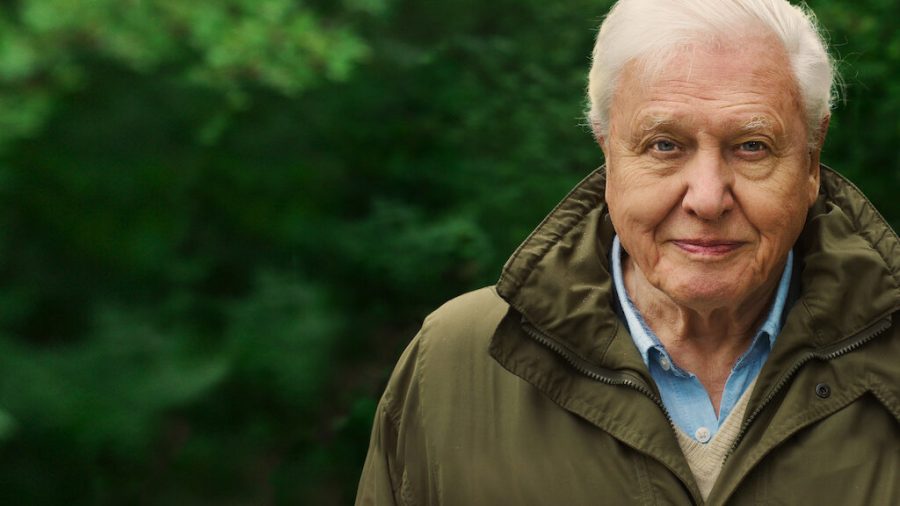REVIEW: Grave look into future of Earth in ‘David Attenborough: A Life On Our Planet’
Assistant Online Editor Srishti Kaushik praises the pressing film ‘David Attenborough: A Life On Our Planet’, as it urges the audience to take action against climate change and the loss of biodiversity.
November 11, 2020
In the new Netflix documentary “David Attenborough: A Life On Our Planet”, the world-proclaimed naturalist broadcaster delivers a much-needed “witness statement” on the past, present and future of the Earth’s natural world. He does this through his classic age-old oration accompanied by new footage as well as scenes from his past documentaries. This documentary comes out just as humanity is standing on the edge of an ecological disaster.
Directors Jonathan Hughes, Alastair Fothergill, Keith Scholey and Jonnie Hughes present the heavy-hitting testimonial of Attenborough’s almost century-long observation of the decline of the natural world and its biodiversity across his lifetime. The documentary doesn’t present any other members of the cast besides Attenborough, putting the audience’s full attention on him.
From the very beginning, Attenborough puts the audience into a grave perspective by setting the introduction in the empty city of Chernobyl, where Attenborough stands seemingly alone and isolated in abandoned houses and schools. Attenborough reminds the audience straight off the bat of the damage humans are capable of.
As the title suggests, the documentary is set in chronological order counting down from Attenborough’s first experience with nature to the present. Each “countdown”, which occurs every few decades also includes statistics like the world population, the carbon in the atmosphere and the remaining wildlife. The growth and decline of the data hit the audience hard. As the film continued, a feeling of panic and fear set in as the gravity of our situation was laid out in front of me.
Each section between the countdown focuses on a particular ecosystem in a certain part of the world from rainforests to the Arctic to coral reefs. The segments begin informatively, giving viewers an understanding of each before showing how badly impacted it is by human activity. The morose and sometimes graphic scenes play into the viewers’ conscience.
After giving a prediction of what could become of the Earth if his lifetime began now, Attenborough becomes emotional and shows his distress at the current situation of the environment, almost compelling the audience to cry along with him. But moving past this, the documentary shifts to a more hopeful light talking about a more secure future and the film returns to Chernobyl where Attenborough delivers his closing statements.
Coming at a pivotal time, this documentary was Attenborough’s testimonial and warning to the world about climate change and the loss of biodiversity and wildlife. This important message is hard to ignore coming from one of the most well-known and respected figures in the naturalist and documentary world and most viewers will have a sense of familiarity with the voice that guides them throughout the film. I personally have grown up watching documentaries narrated by Attenborough and felt the attachment
Watching this documentary and spreading Attenborough’s “witness statement” based on decades of knowledge and experience will make you a participant in a much-needed movement and project to save our planet.










